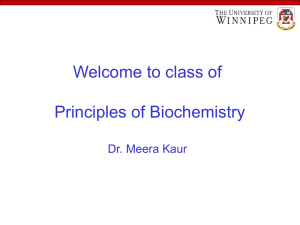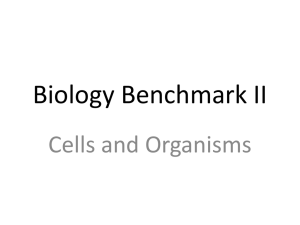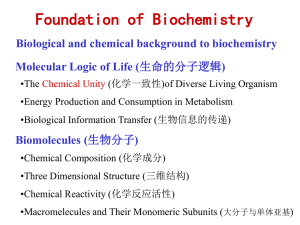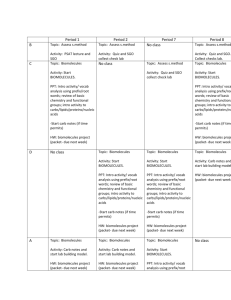biogenic elements
advertisement
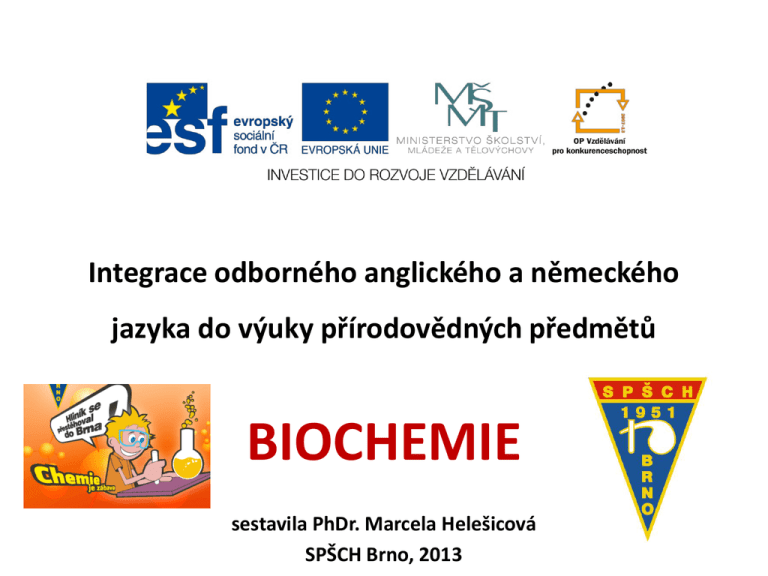
Integrace odborného anglického a německého jazyka do výuky přírodovědných předmětů BIOCHEMIE sestavila PhDr. Marcela Helešicová SPŠCH Brno, 2013 CHEMICAL COMPOSITION OF LIVING ORGANISMS text for education of biochemistry KEY WORDS • • • • living organisms living matter chemical elements biogenic elements – macrobiogenic elements – microbiogenic elements – trace elements KEY WORDS • biomolecules • inorganic substances – water – carbon dioxide – salts • organic substances – – – – proteins nucleid acids saccharides lipids • biological macromolecules – biopolymers • high molecular substances • low molecular substances CHEMICAL ELEMENTS IN THE NATURE • 92 elements are naturally present in the nature. ELEMENTS IN THE EARTH´S CRUST • 92 elements • 75 % oxygen and silicon, 25 % other elements BIOGENIC ELEMENTS • About 30 elements create the living matter. • Biogenic elements are divided into 3 groups. • Macrobiogienic elements: C, O, H, N, S, P, Na, K, Ca, Mg, Cl, Fe – Four elements represent up to 95 % of living matter. – building function BIOGENIC ELEMENTS • Microbiogienic elements: I, Zn, Co, Mn, Mo, Cu – catalytic function • Trace elements: Al, F, Si, Se, ………. – catalytic function BIOMOLECULES Living organisms are composed of several types of substances called biomolecules. Low molecular substances High molecular substances BIOMOLECULES • Low molecular substances (Mr < 10 000) – water – carbon dioxide – mineral salts – amino acids – lipids – monosaccharides – nucleotides BIOMOLECULES • High molecular substances (Mr > 10 000) – BIOLOGICAL MACROMOLECULES – proteins – nucleic acids – polysaccharides Questions and tasks 1. Which two chemical elements are the most frequent in the Earth’s crust and what is their form? 2. What are biogenic elements, how do we divide them? 3. Name 4 basic macroelements. Why are they important? What is their content (percentage) in living organisms? 4. Name the microbiogenic elements and give examples of their importance. 5. What is the function which is common for trace elements and what is their content in living organisms? Questions and tasks 6. Explain the term biomolecule. Which element forms biomolecules? 7. What is the average content of water in organisms and what is its function? 8. Give 3 examples of non-dissociated salts which are present in human body. Give examples of tissues, where the salts are present. 9. Name the basic groups of biopolymers and name the building units they consist of. 10. Give the average percentage of proteins, saccharides, lipids and nucleic acids in living organisms. THANK YOU FOR YOUR ATTENTION
